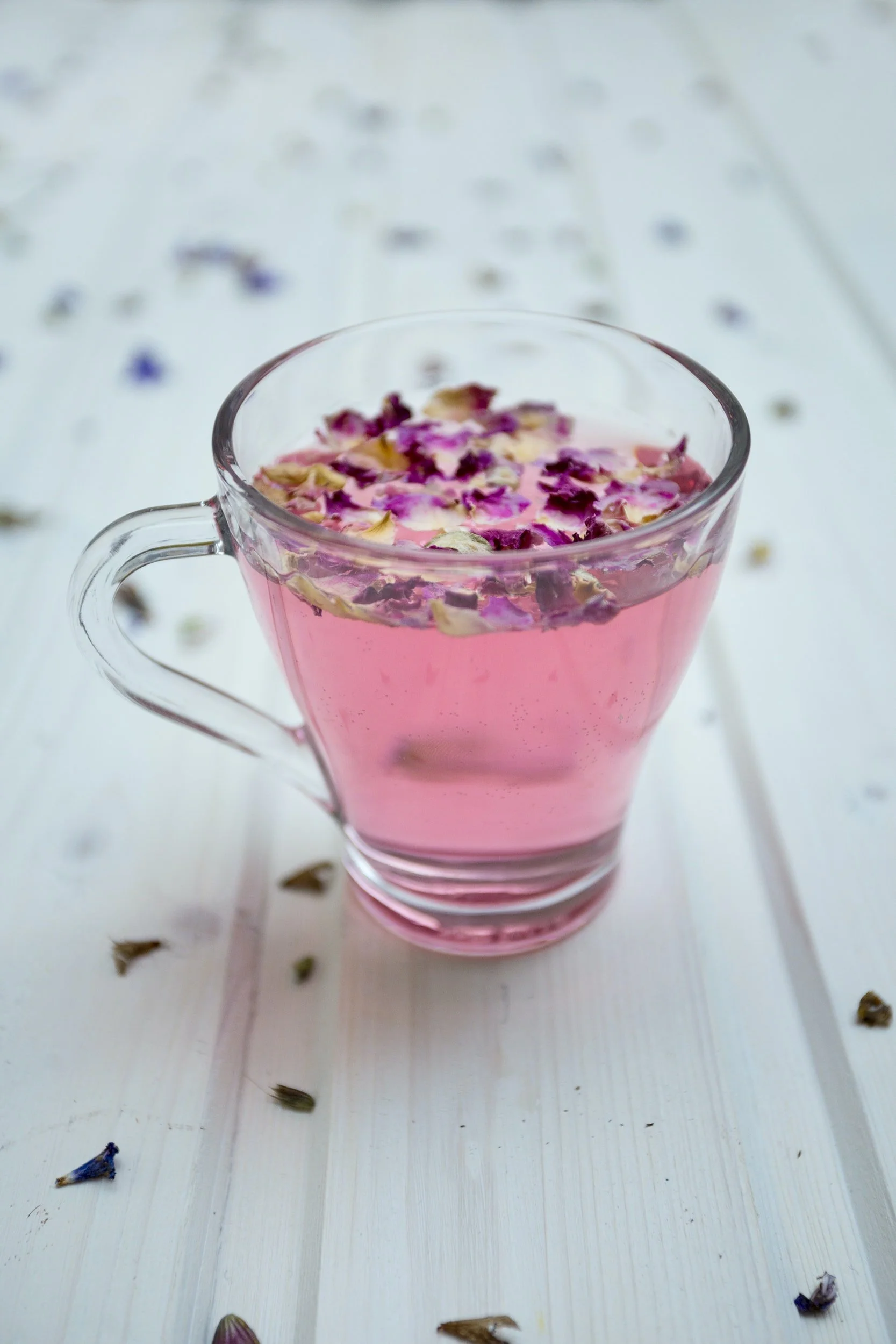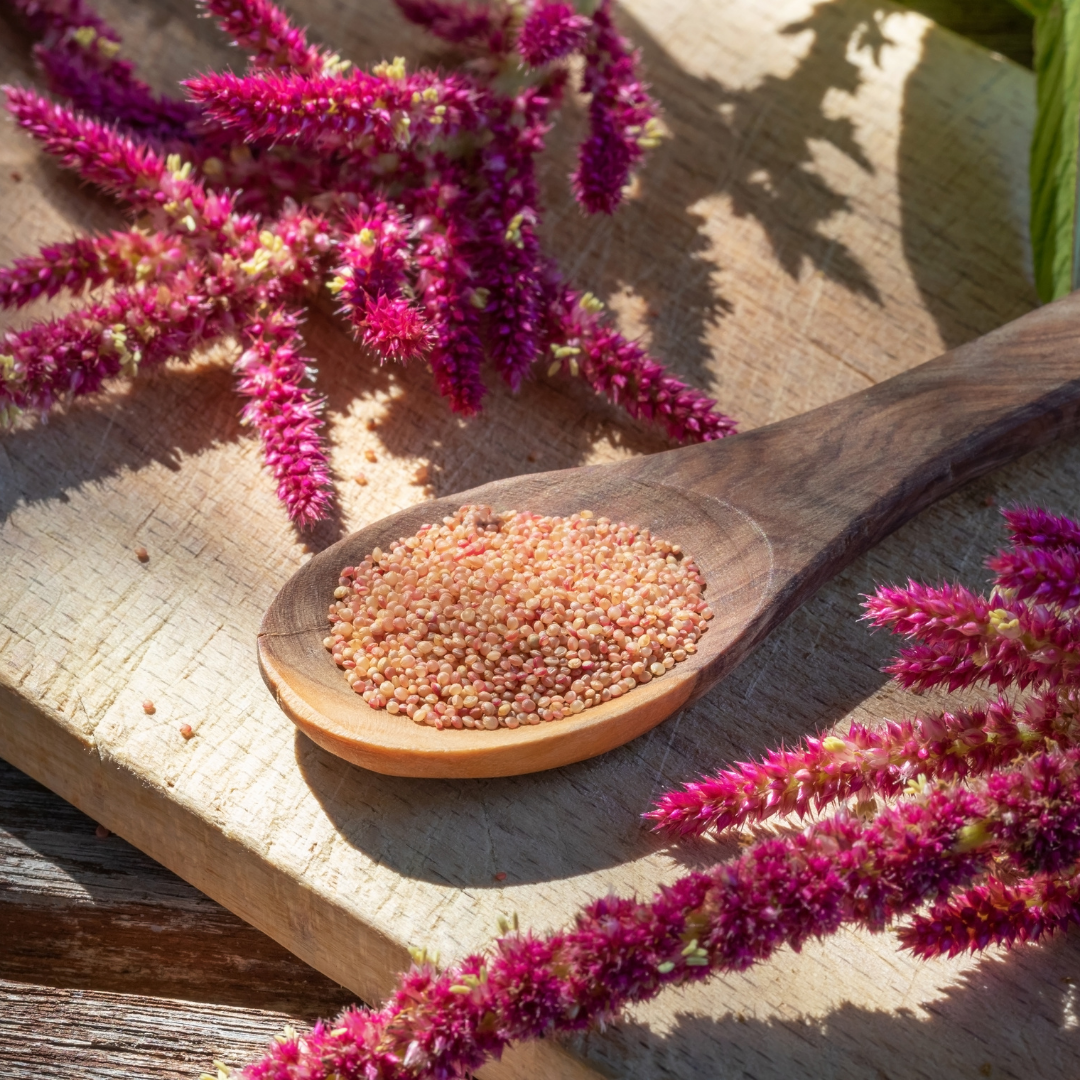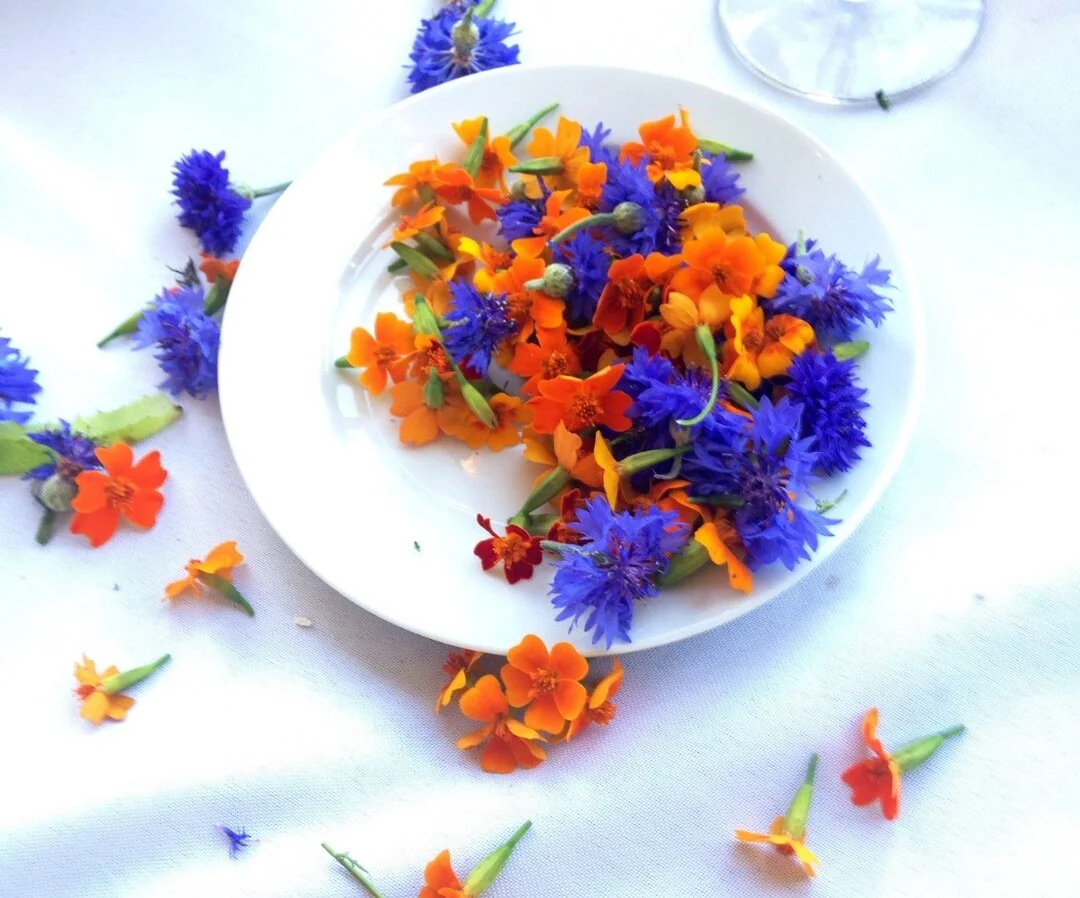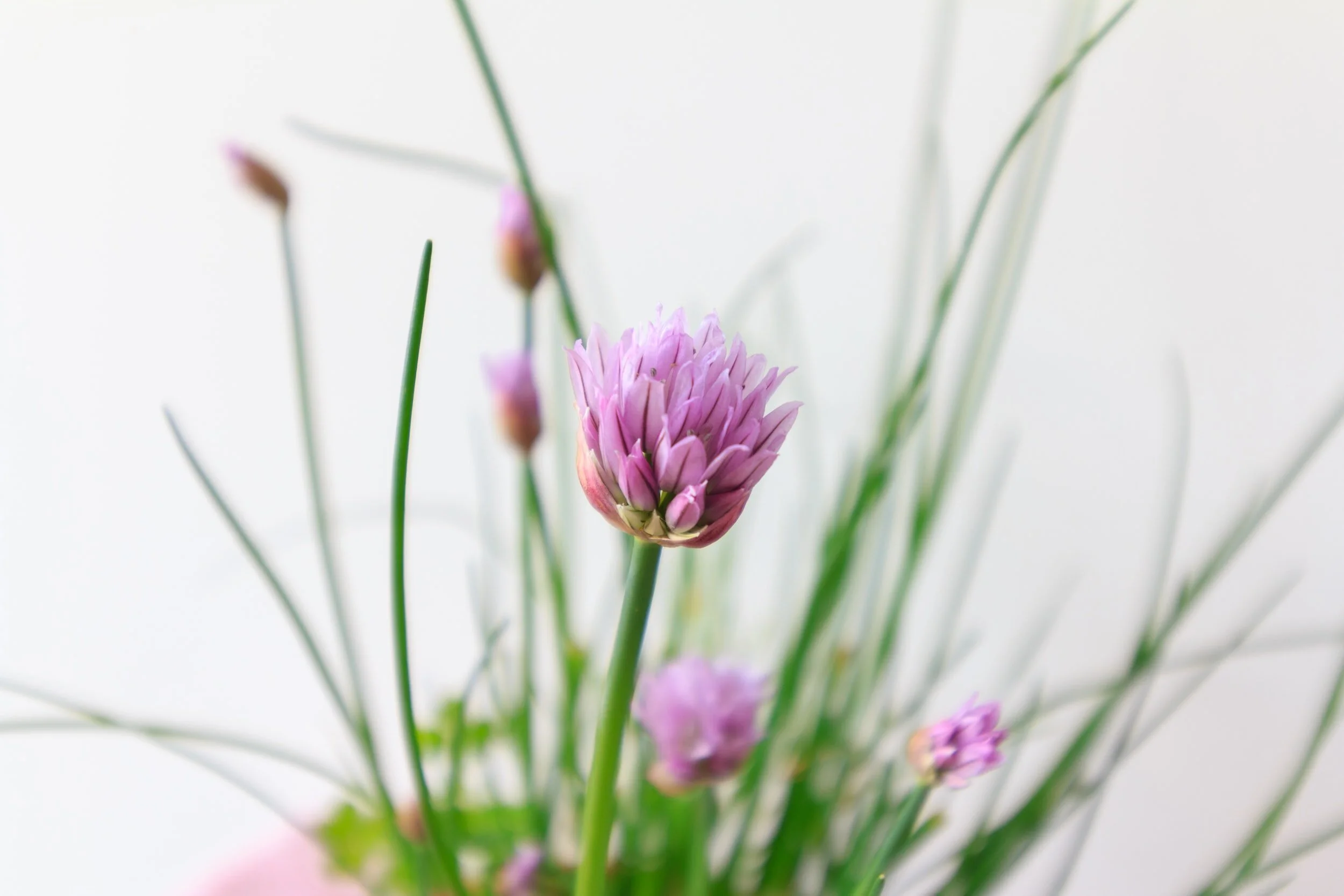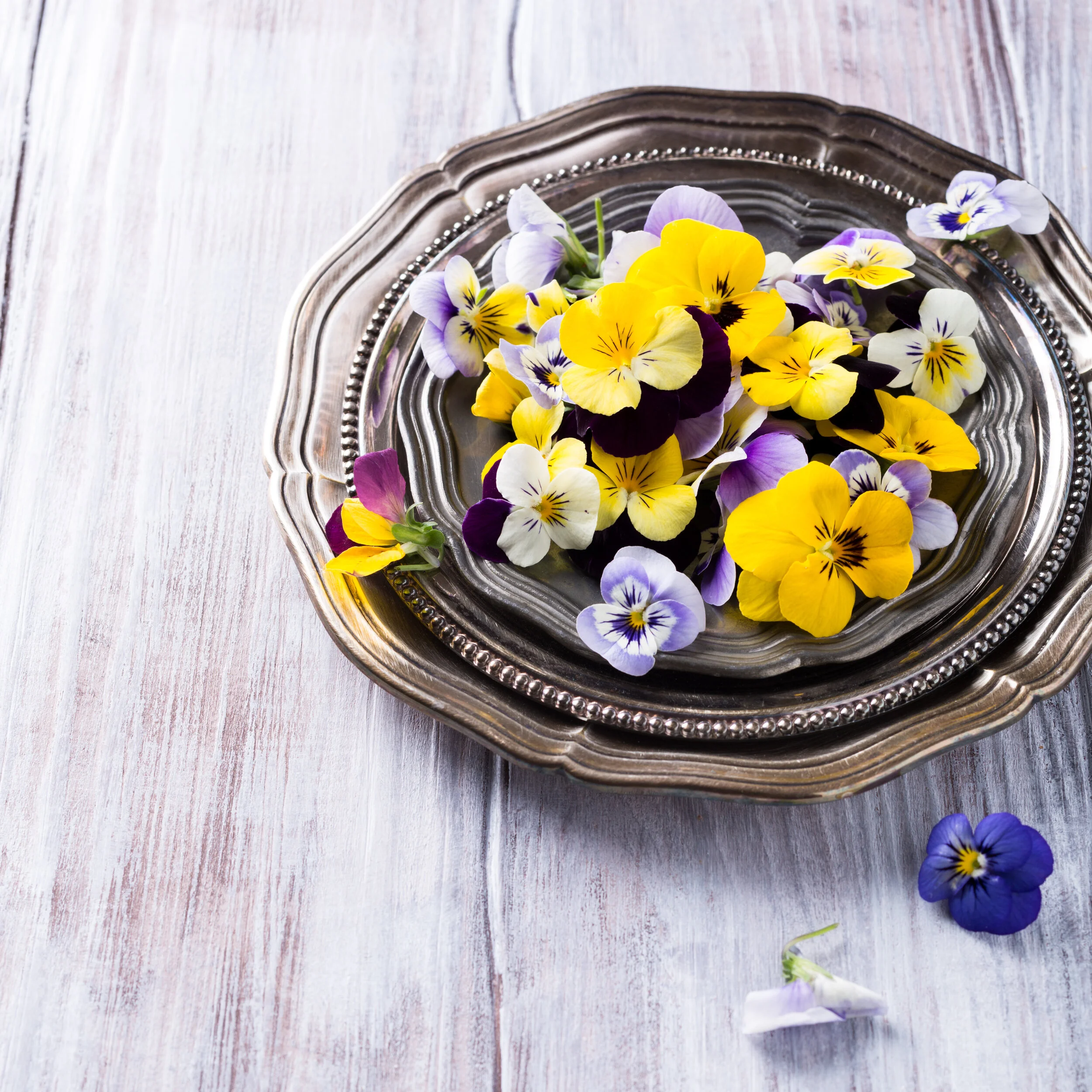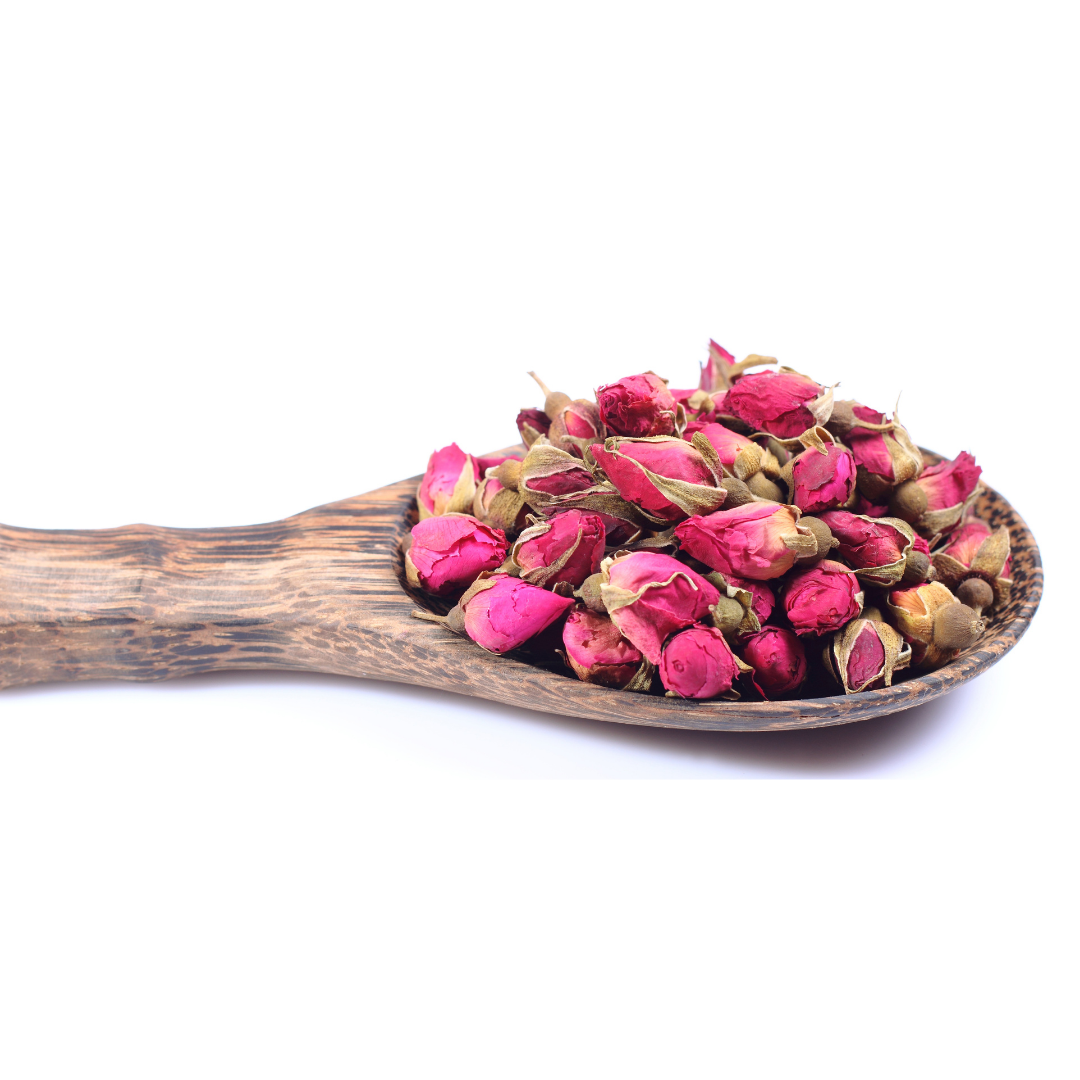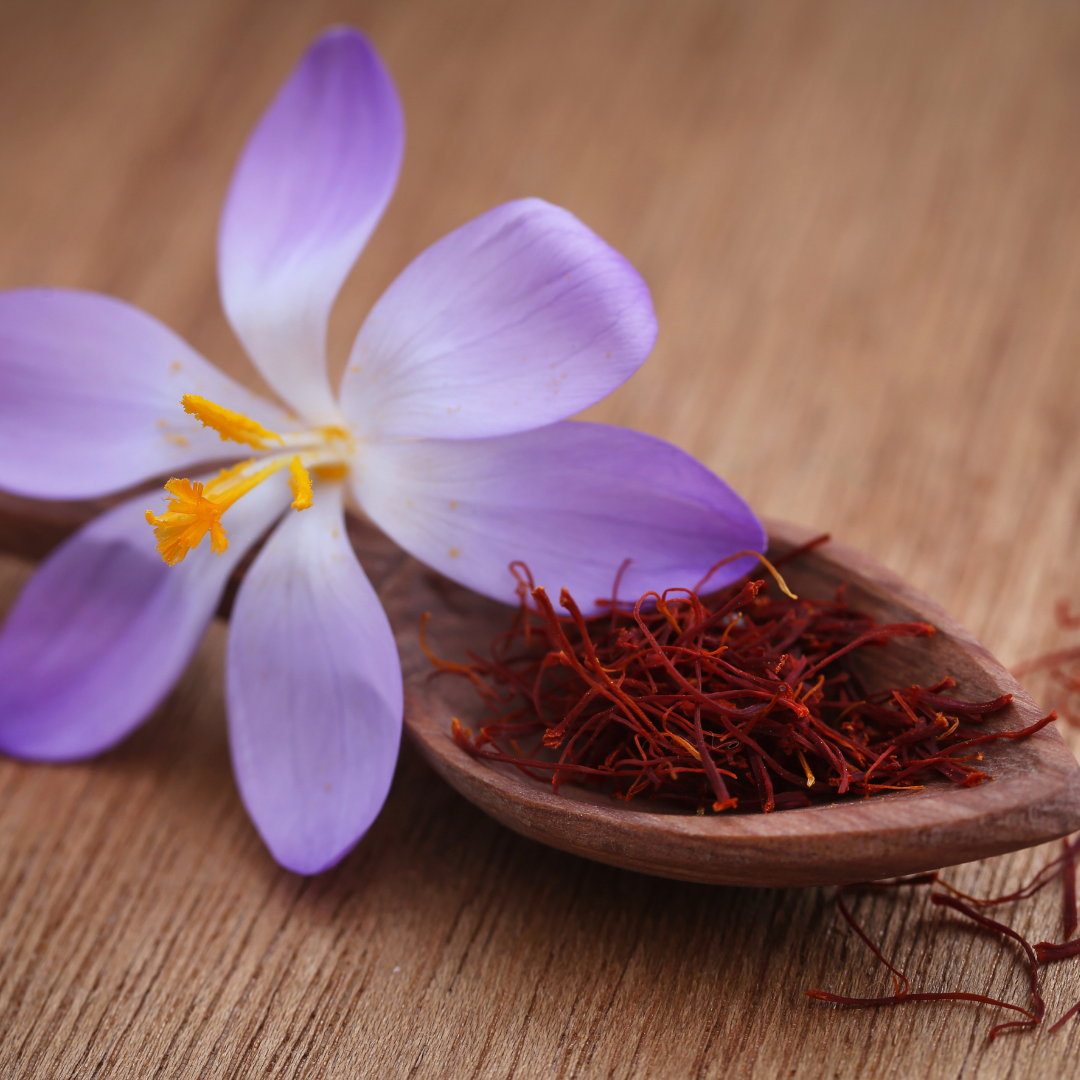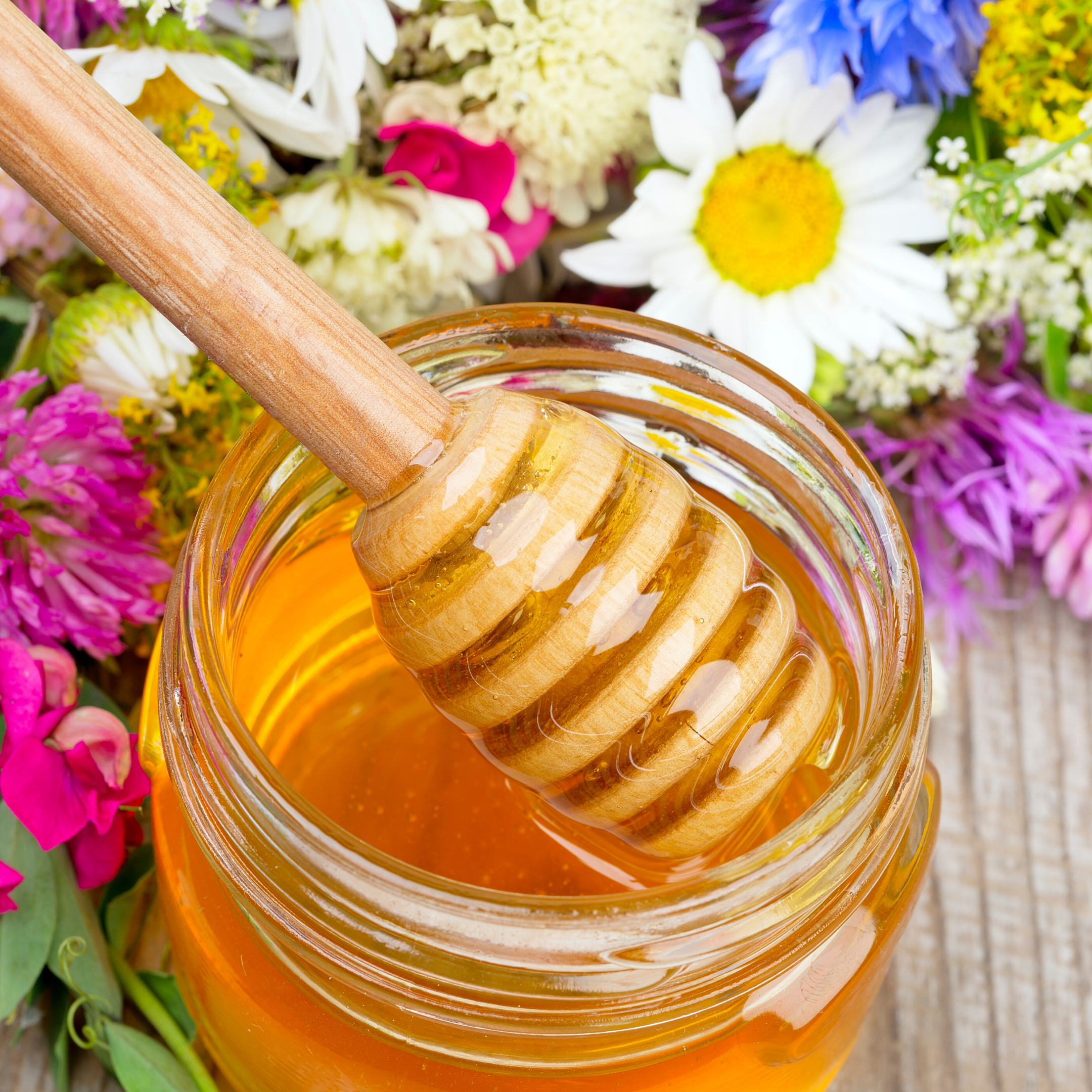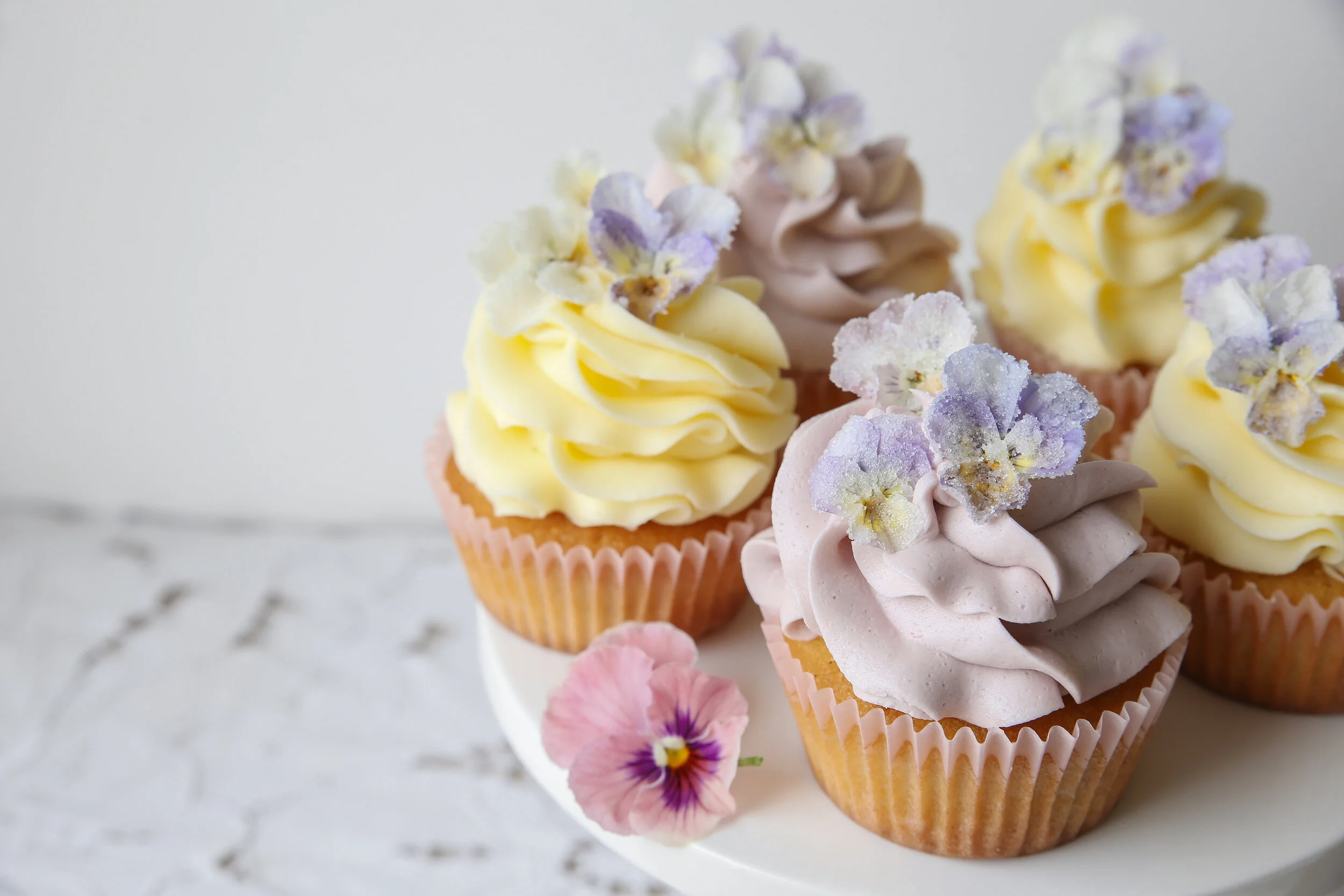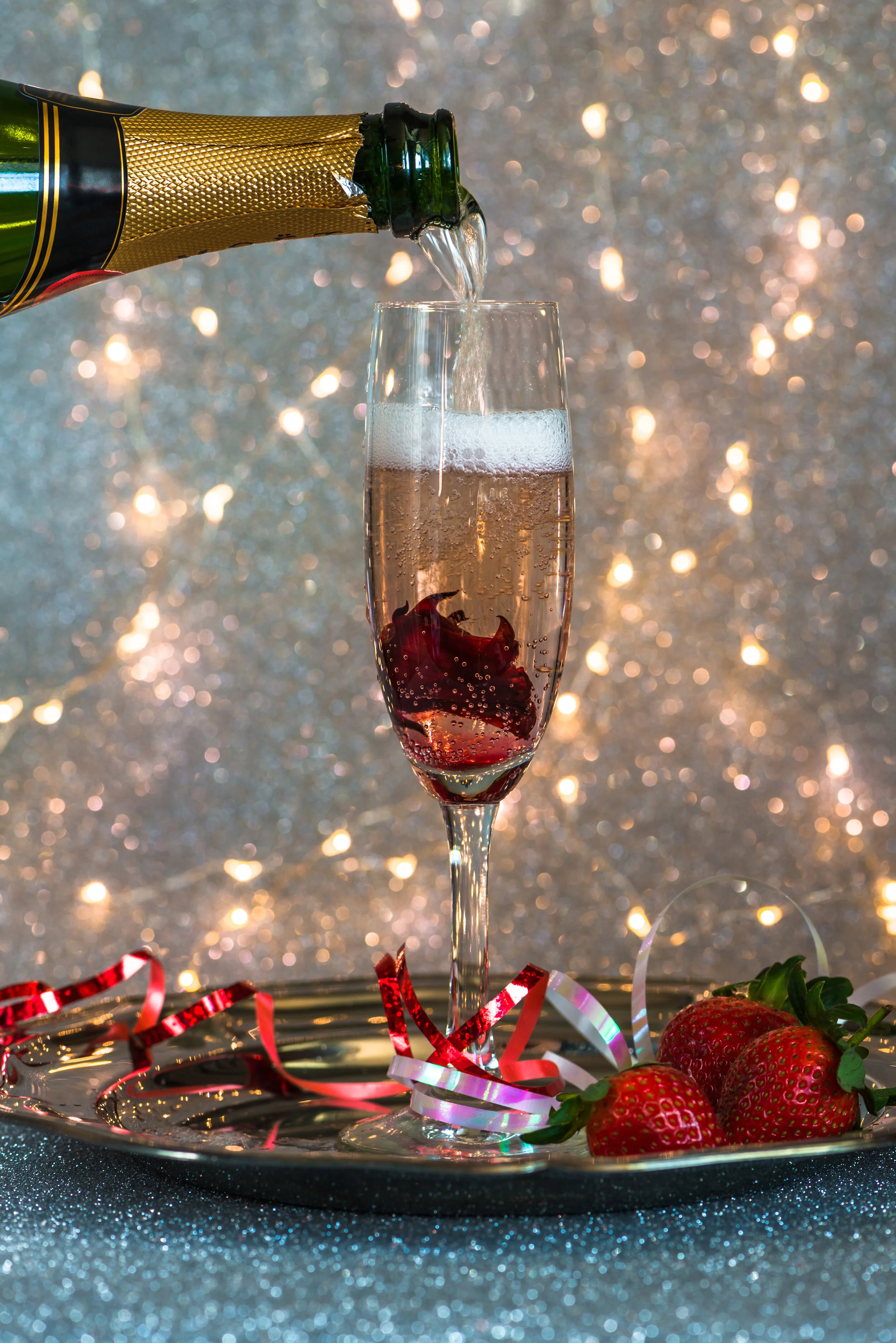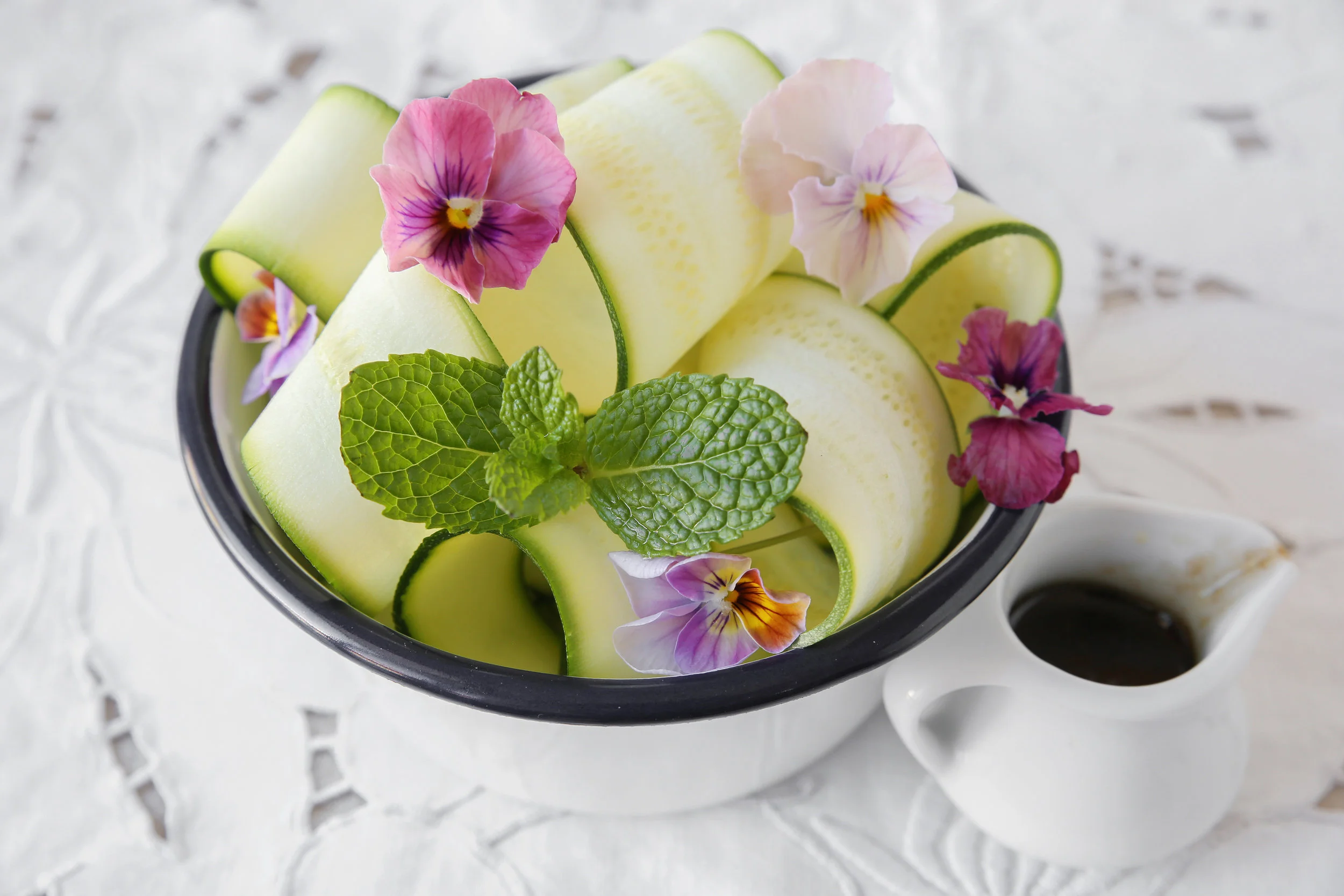Floral Water - Easy Recipe, Multiple Uses
As you know by now there are many flowers that are edible. They can be eaten either fresh or dried, used in sweet or savory dishes, or for teas and cocktails. Today I’m going to share a really easy recipe with you for ‘Floral Water’.
As you know by now there are many flowers that are edible. They can be eaten either fresh or dried, used in sweet or savory dishes, or for teas and cocktails. Today I’m going to share a really easy recipe with you for ‘Floral Water’.
Floral Water can be used as an alternative to plain water to add flavour to ice cubes, baking, or to drink.You can also put it in a spray bottle and use it as a refreshing face spritz.
As always make sure the flowers you are using are safe to consume. (You can look at my post ‘My Top Three Rules For Using Edible Flowers’.)
Floral Water
200ml filtered water
6 Tbsp fresh or dried edible flowers
Sterilized jar, bottle, or spray bottle
Place your water in a small saucepan and bring to a boil.
Place flowers in a heatproof bowl, pour boiling water over top.
Place a plate inside the bowl adding weight to keep the flowers submerged in the water.
Leave to infuse at room temperature overnight.
Strain water into your sterilized container.
Store in the fridge for up to six months.
Suggestions of types of flowers to use:
Lavender, chamomile, geranium, rose, jasmine.
Here are links to some of my previous blog posts on edible flowers:
Amaranth - A Must Read
Last week I came across a great article in the Guardian titled: “It Could Feed the World: Amaranth, a Health Trend 8,000 Years Old that Survived Colonization”. I was so intrigued.
The only things I really knew about amaranth before I read the article were how it has a unique appearance that adds interest to a bouquet, and sometimes it’s referred to as ‘Love-lies-bleeding’.
Last week I came across a great article in the Guardian titled: “It Could Feed the World: Amaranth, a Health Trend 8,000 Years Old that Survived Colonization”. I was so intrigued.
The only things I really knew about amaranth before I read the article were how it has a unique appearance that adds interest to a bouquet, and sometimes it’s referred to as ‘Love-lies-bleeding’. Not the nicest sounding name, but somehow it does suit the look of the flower.
But after reading this article, I’m looking at amaranth in a whole new light. I’ve learned that amaranths are very nutritious. They’re full of vitamins and minerals with every part of the plant - flowers, stems, leaves and seeds - all being edible.
But that’s not all. This article is also about the incredible “indigenous women in North and Central America who are coming together to share their ancestral knowledge of amaranth”.
I hope you’ll take the time to read this fascinating and informative article.
You can access the article HERE
(Note: You must make sure any flowers you are consuming are safe to eat. Learn more from my article ‘Top 3 Rules for Using Edible Flowers’.)
5 Easy Ways To Use Edible Flowers
Flowers not only brighten an environment, they can also brighten up your culinary creations - and it doesn’t need to be difficult. Here are five easy ways to use edible flowers:
Flowers not only brighten an environment, they can also brighten up your culinary creations - and it doesn’t need to be difficult. Here are five easy ways to use edible flowers:
1 - Decorative ice cubes:
In each compartment of an ice cube tray add a bit of water and a flower and freeze. Then add more water and freeze until solid.
2 - Garnish sweet or savoury dishes:
Choose flowers with colours, shapes and textures that compliment what you’ve made. Either use the whole flower as a garnish at the side of the plate or sprinkle petals over the whole dish.
3 - Steep as tea:
Chamomile, lavender, jasmine, and rose all make delicious floral teas. Use either on their own or mix with black, green, or white tea.
4 - Infuse syrups:
Combine 1 cup of water and 1-2 cups of flower petals to a saucepan and bring to a simmer. Remove from heat and let sit for at least an hour. After the syrup is cool, strain and then add to your favourite beverage.
5 - Crystalize:
Dip flowers into egg white and then into fine sugar. Shake off any excess and lay to dry before using to decorate your baking. For more details you can look at my previous blog post ‘Edible Candied Flowers’.
Always make sure the flowers you are using are edible - even if you just mean to use them as a garnish. You can find safety guidelines about edible flowers in my post ‘Top 3 Rules For Using Edible Flowers’.
7 Flowering Herbs Perfect To Use In Flower Arranging
We’re all familiar with lavender and chamomile as herbs that are edible and can also be popped into a vase to brighten our environment. But there are many more herbs that can be used both ways. This summer why not experiment with the following summer herbs in the kitchen and in flower arranging.
We’re all familiar with lavender and chamomile as herbs that are edible and can also be popped into a vase to brighten our environment. But there are many more herbs that can be used both ways. This summer why not experiment with the following summer herbs in the kitchen and in flower arranging.
Basil: Best wishes
Edible:
Basil flowers have a milder flavour than their leaves. They make a wonderful garnish sprinkled over salads, cheese plates, or pasta.
Flower arranging:
Basil leaves are glossy and fragrant. Their flowering stems add texture and interest to a mixed bouquet.
Oregano: Joy
Edible:
Oregano flowers have a more delicate flavour than their leaves. Sprinkle over a salad or pizza, or use them to infuse oils.
Flower arranging:
Oregano grows small pink, white, or light purple flowers at the top of their stems. They make a very pretty accompaniment to a bunch of lavender.
Rosemary: Remembrance
Edible:
Rosemary flowers have almost the same flavour as their spiky little needles. The blossoms don’t stand up well to heat so use them as a finishing garnish on lamb or pork dishes.
Flower arranging:
Rosemary’s strong stems, and woodsy, nature-y look, make them an excellent addition to bouquets and centrepieces. They are long lasting.
Dill: Good cheer/Good luck
Edible:
Dill flowers are slightly stronger in taste than their leaves. They make a tasty and pretty addition to jars of pickles or sprinkled over salads or bread.
Flower arranging:
The dill flower’s yellow colour adds a bit of sunshine to a summer bouquet.
Chives: Usefulness
Edible:
Chive blossoms can be used as a pretty garnish for cold dishes or added to soups, stews, and sauces. Their light onion flavour is also a wonderful addition to vinegar.
Flower arranging:
The purple, puffy flower at the tip of chive stems adds a pretty pop of colour to any flower bouquet or arrangement.
Fennel: Force/Strength/Worthy of praise
Edible:
Fennel comes as a vegetable or a herb. Both have a licorice flavour and are used in cooking or for medicinal reasons.
Flower arranging:
The bright yellow florets and wispy foliage of the fennel herb bring colour, texture, and fragrance to bouquets and arrangements giving them a fresh, unique look.
Borage: Courage
Edible:
Borage makes a very pretty garnish for summer drinks and salads. It’s flavour and scent is reminiscent of cucumbers.
Flower arranging:
The pretty blue, star-shaped flowers of borage make them a unique addition to a bouquet. Their tangled stems are great for holding other flower stems in place.
While herbs add a natural, seasonal element to a mixed bouquet, why not get creative and make some ‘all herb’ theme bouquets. You could create ‘herbs for pasta’, ‘herbs for bread making’, or ‘herbal tea’ bouquets. What a perfect summertime gift they would make!
Have Your Own Readily Available Source Of Fresh Edible Flowers
There’s nothing like the addition of fresh flowers to your cooking or baking to take it from something ordinary to something extraordinary. A sprinkling of colourful petals on a salad suddenly makes it look gourmet, and a few carefully placed blooms on a cake makes …
There’s nothing like the addition of fresh flowers to your cooking or baking to take it from something ordinary to something extraordinary. A sprinkling of colourful petals on a salad suddenly makes it look gourmet, and a few carefully placed blooms on a cake makes it look like a professional decorated it. The problem is, (at least where I live), fresh edible flowers are not readily available.
However, there is a simple solution - grow your own. I have done very little gardening in my life, but the thought of having a readily available source of edible flowers has spurred me on to learn how to grow them.
There is an almost overwhelming amount of information out there about growing edible flowers. It’s a lot to sift through, but in the end, I narrowed it all down to three easy to grow choices. Here’s what I’ve learned about them:
Nasturtiums:
Nasturtiums became my first pick as soon as I read the words ‘Very easy to grow, they thrive on neglect’. (Not that I would ever be neglectful, but it makes it sound like a pretty fool-proof flower to grow!)
About growing:
Grows quickly from seeds or can be bought as bedding plants;
Grows well in containers;
Prefers full sun, but if in a really hot area can tolerate afternoon shade;
Consistent moisture, but not damp is best;
Do not fertilize as it will cause more leaves than flowers to grow.
About eating:
Peppery, spicy flavour (cross between a radish and watercress);
Full of vitamins A, C, and D;
All parts are edible (petals, leaves, seeds);
Come in reds, oranges and yellows;
Used in dishes whole, or torn into pieces.
Calendula:
Calendula is a summertime favourite with gardeners.
About growing:
Easy to grow from seed right in the garden;
Regular watering is preferred, but they can tolerate drier conditions;
Plant in nourishing soil - no extra fertilizing needed;
Dead-head plants and they will continue to bloom from early summer to late fall.
About eating:
Flavour can be spicy, bitter, tangy, or peppery;
Comes in various shades of yellow and orange;
Adds a yellow tint to food;
Pull the petals off the centre of the bloom to use in salads, or to decorate baking;
Dried calendula can be made into a tea, or added to soups or stews to calm an upset stomach.
Lavender:
While very popular as an ingredient in beauty products, lavender is also edible.
About growing:
Grow in a well-drained area, a raised bed, or in containers;
Prefers full sun;
Very little watering required (most people over-water);
No fertilizer is necessary
Harvest lavender when the first few flowers are opening on each stem.
About eating:
Can be used fresh or dried;
Distinctive floral taste mixed with a hint of rosemary and mint;
A little goes a long way - use sparingly;
Use to make tea, infuse sugar or honey, make herbed butter, or decorate sweet treats.
These are the first three edible flowers I’m going to try and grow as they all seem very forgiving to beginner gardeners. But remember - these flowers are for eating so make sure to grow them organically. For other important safety tips when consuming edible flowers read my post ‘Top 3 Rules for Using Edible Flowers’.
If you have any tips or advice to give a beginner gardener about growing flowers please put them in the comments below. They would be much appreciated.
PS - A little something I thought I’d share with you. I live in an apartment, so I was imagining I would need to grow flowers in pots out on the balcony. But, two days after I’d made the decision to try growing edible flowers, one of those weird coincidences in life occurred. I was out for my morning walk in the neighbourhood and I passed a place with a sign saying there were a few community garden plots available and if interested to apply. So I did - and I was accepted to be allocated one of the plots this year! So now I will have my own little patch of soil to work in. Thank you Pacific Spirit Community Garden!
4 Ways to Use Edible Rose Petals - Plus An Easy, Elegant Recipe
We’re heading into winter when it’s not as easy to use fresh edible flowers in your baking and cooking, but don't worry, you can still use dried flowers! They’re readily available and have great flavour. Today I’m going to share with you a number of ways …
Edible dried roses
We’re heading into winter when it’s not as easy to use fresh edible flowers in your baking and cooking, but don't worry, you can still use dried flowers! They’re readily available and have great flavour. Today I’m going to share with you a number of ways you can use edible dried rose petals, followed by a really simple idea for you to try out at home.
Whenever I talk about using flowers as food, I always give a caution as you must make sure the flower you are using actually is an edible flower and that it meets certain safety standards. You can read my top safety rules HERE.
Whether you dry your own rose petals or buy them from a reputable source, the best way to store them is in a cool, dark, dry place. Kept this way, they will last 1-3 years before they start to lose their colour.
Here are 4 ways to use dried rose petals:
As a garnish on sweet or savoury dishes: Dried flower petals can have a papery texture, so when using as a garnish chop them quite finely and sprinkle over top. You’re using them for their beautiful colour effect, not their texture.
As a spice: To use dried rose petals as a spice, toast lightly in a dry pan. This will intensify their aroma and add a smokey hint to their flavour. Just keep an eye on them while toasting as they can burn quite quickly. Grind them up and add to your savoury dishes. They work especially well in rice dishes.
Brewed as a tea: Used as a tea, dried rose buds can be used on their own, or mixed with other types of flowers or herbs. The combinations are endless.
To make flavoured sugar: Use ground rose petals (untoasted) and mix with granulated sugar to add as a flavoured sweetness to your dishes.
There are a multitude of recipes you can find that include dry rose petals, but if you want to start with something simple, try your hand at this beautiful and tasty treat:
Chocolate Dipped Strawberries With Rose Petal Sprinkles
To make approximately 24 strawberries:
16 ounces of good baking chocolate. I prefer semi-sweet or bittersweet, but you could also use milk or white chocolate;
2 Tbsp shortening (coconut oil also works);
1 lb fresh, clean, dry strawberries with leaves
2 Tbsp dried, coarsely ground edible rose petals
Leave about ½ cup of chocolate to the side and then melt the rest of the chocolate and the shortening/coconut oil in a double-boiler stirring constantly until melted;
Remove from heat and add in the reserved chocolate to temper it. Stir until melted;
One at a time dip the strawberries in the chocolate;
Sprinkle with rose petals on all sides;
Lay on a parchment paper covered baking sheet until chocolate is set.
Top tip: These dipped strawberries sprinkled with rose petals are best eaten the same day they’re prepared, but if needed, you can store uncovered in the refrigerator for one day.
5 Fun Flower Food Facts
Before getting to all the fun flower food facts, I’m going to start (and then finish) this post with a safety note.
CAUTION: With all flowers do not assume the variety you have is the edible variety. Check with an expert before you consume. Once you have positive confirmation you have the right variety of the right flower, follow the general safety rules for edible flowers that I wrote about HERE.
With that in mind, here are five fun flower food facts….
Before getting to all the fun flower food facts, I’m going to start (and then finish) this post with a safety note.
CAUTION: With all flowers do not assume the variety you have is the edible variety. Check with an expert before you consume. Once you have positive confirmation you have the right variety of the right flower, follow the general safety rules for edible flowers that I wrote about HERE.
With that in mind, here are five fun flower food facts.
1 - Violets: Violets taste like mint. These pretty purple petals have a hint of mint making them a perfect garnish for sweet or savory dishes. The leaves are also edible, just cook them in the same way you would spinach.
2 - Roses: The most flavorful rose petals are those that are the most fragrant. All roses (once they’ve passed the safety test) are edible, but if you want a lot of flavour, choose the really fragrant varieties. Roses are great to infuse liquids or as a garnish for baked goods. Full of vitamin c, they are also a perfect - and pretty - addition to salads.
3 - Dandelions: Dandelions are a highly nutritious edible flower. If you want to eat something packed full of nutrients, eat dandelions. Vitamin A and C, iron, calcium, phosphorus, fiber - you’ll get them all in a dandelion. Young dandelions have a sweet taste (reminiscent of honey), but the older they get the more bitter they taste. The yellow petals are a great addition sprinkled on a salad and the greens can be eaten raw, or cooked as you would spinach. And if you want to be adventurous, perhaps try your hand at making some dandelion wine.
4 - Hibiscus: The hibiscus flower is edible. Hibiscus are beautiful, colourful tropical flowers. Their blooms are so big, you don’t naturally think of them as edible. Even in Hawaii I’ve never been served anything with a hibiscus flower as part of the dish. Making tea from the blossom is the most common way it’s used, but you can also chop it up to add a colourful confetti look to a salad or dessert. Recently I’ve had hibiscus blossom in syrup as part of a festive drink. You can find details HERE.
5 - Crocus: You need a specific type of crocus to harvest saffron. As mentioned in my ‘caution’, many flowers have multiple varieties. Crocus is one of them. Saffron comes from the ‘saffron crocus’, not to be confused with the ‘autumn crocus’. Saffron (from the correct type of crocus), is a great way to add flavour and colour to many dishes. It works well in Mediteranean and Asian dishes, (particularly anything with rice), and it’s also popular in bread baking. Saffron is the most expensive spice in the world. To make sure you’re using the real thing, I’ve heard of a little test you can do. Place a little piece of saffron in a cup of warm water or milk. If the liquid colours right away, your saffron is a fake. The ‘real deal’ takes 10-15 minutes of soaking before the colour changes. With the price you’ll pay for it, you want to be sure your saffron is genuine.
Once again remember this caution: With all flowers do not assume the variety of flower you have is the edible variety. Check with an expert before you consume. Once you have positive confirmation you have the right variety of the right flower, follow the general safety rules for edible flowers that I wrote about HERE.
Flowers and Honey
One fun way in which flowers make life better is through honey.
By now you realize that I love all things related to flowers – and that includes honey. In fact, I’m starting to get obsessed with it! I’m still at the beginning of my …
One fun way in which flowers make life better is through honey.
By now you realize that I love all things related to flowers – and that includes honey. In fact, I’m starting to get obsessed with it! I’m still at the beginning of my learning journey about ‘all things honey’, but I definitely already have some interesting information to share with you.
What exactly is honey? Honey is made from the nectar of flowers that are collected by honeybees. There are many different varieties of flower honey available – in fact over 300 types! The colour, flavour and sweetness level varies depending on what type of flower the nectar comes from.
Today I’m going to focus on two types of honey - ‘clover’ and ‘wildflower’. But before I do that, let me just briefly talk about the importance of buying local honey.
As you probably already know, the global bee population has drastically reduced over the past few years due to a wide range of factors. In general, the benefits of buying local honey are the following:
Bee farmers are committed to their bees, making sure they are cared for in a healthy environment. That helps the species thrive.
Having bees around to pollinate local crops benefits all agriculture in the area. Without pollination, crops don’t grow.
Having bees locally helps the environment. Once the honey is produced, if it doesn’t have to travel far to get to you, and therefore the carbon footprint is reduced and energy is saved.
When buying local honey, you support your local economy; and that’s a cycle that we want to keep going.
These are all excellent reasons to buy local. Now, on to comparing clover and wildflower honey:
Clover honey: Clover honey is a ‘monofloral’ or ‘uni-floral’ honey, which means the nectar is predominately collected from one type of flower - in this case, clover. Clover honey is by far the most common type of honey. It’s light-coloured, mildly floral, and sweet. As the taste is clean and clear, with no bitterness, it doesn’t overpower anything it’s paired with.
Wildflower honey: Wildflower honey tends to be darker in colour and stronger in taste than clover honey. I find wildflower honey very exciting because bees have collected the nectar from a multitude of local wildflowers so there are multiple ways it can taste. The types of flowers the bees visit could include poppies, forget-me-nots, marigolds, asters, lavender, dandelions, and cornflower. As you can imagine, the taste and colour vary depending on the mix of flowers the bees visit. Time of year is also a variable, and honey from a certain period in one year can taste very different from the same period the next year.
Right now, I’m buying small jars of honey from different local farms so I can taste many different types. So far, there hasn’t been one I don’t like, although my favourite is from a very small place about an hour from where I live. Making honey is a hobby for this beekeeper rather than a business. Each season he fills up jars of honey, puts them at the end of his driveway and for $5.00 you take a jar home of the most flavourful honey you have ever tried. I literally end up eating it by the spoonful!
I’m going to keep up my research on honey over the summer months. I think this will be a fun little project for me and I look forward to sharing all that I learn with you. In the meantime, if you have a favourite honey, please let me know, and if it’s available to me, I will try it.
Top tip: Often when you go on a trip you bring gifts home for friends and family, or a souvenir for yourself. I’d like to suggest you bring home a jar of honey from the place you’re visiting. This supports the economy of the place you chose to visit and is a great way to say “thank you”, to the area that hosted you.
Edible Candied Flowers
Edible flower decorations – what a treat! These candied flowers have such a dramatic impact on desserts, it’s hard to believe they’re so simple to make.
The first thing to do before trying your hand at making these, is to …
Edible flower decorations – what a treat! These candied flowers have such a dramatic impact on desserts, it’s hard to believe they’re so simple to make.
The first thing to do before trying your hand at making these, is to check you’re using edible flowers. If you’re not sure, you can read my Top 3 Rules for Using Edible Flowers here.
Once you’re certain your flowers are safe to use you’re ready to begin. Throughout this recipe I have highlighted some helpful tips for you.
Ingredients:
- edible flowers; about 50 small flowers or petals
- 1 large egg white (you may use pasteurized egg whites if you wish)
- 2 cups fine sugar
You’ll also need a small soft bristled paintbrush and a pair of tweezers
Directions:
1. Gently wash and pat dry your edible flowers. Set aside.
Large or thick flowers won’t work for this, as they won’t dry completely. Choose dainty flowers like primroses, violas, pansies or borage, or just the petals of larger flowers like roses.
2. Place the egg white in a small bowl and whisk until frothy. Add a drop or two of water if it needs to be smoothed out.
Egg whites are necessary to this recipe, so if consuming raw eggs is a concern, use a pasteurized egg white.
3. Pour sugar into a shallow bowl.
Don’t worry about an exact measure of sugar. Try two cups but adjust amount as needed. Use the finest sugar you can find. Don’t use regular or powdered/icing sugar.
4. Gently pick up one edible flower with your tweezers. Use your paintbrush to softly paint a light coating of egg white on the underside of the flower. Still holding with the tweezers, turn the flower over and paint the top side. Make sure to coat all surfaces.
Work with one flower at a time. Complete the whole egg/sugar process before moving on to the next flower.
5. Sprinkle the top and bottom of the flower with sugar. Tap gently to remove any excess.
If the sugar is absorbed after a few minutes then sprinkle again.
6. Place on a parchment paper covered baking sheet to dry.
7. Repeat process with each flower.
8. Let all the flowers dry at room temperature. This could take 12-36 hours. Flowers are completely dry when stiff and brittle to the touch.
Always double check the thickest part of your flower to make sure no moisture is left.
Your edible, crystallized, candied flowers and petals are now ready to use! What will you decorate?
If you’re not using any of your candied flowers right away, store them in airtight containers in single layers. Keep them at room temperature in a cool, dry place. They can be stored for up to a year.
Three Edible Flowers
Many flowers are edible. Using them in your baking, cooking, and beverages will add a layer of complexity and delight to your culinary creations making them uniquely tasty and beautiful.
Before you begin to experiment with edible flowers, take the time to learn which…
Many flowers are edible. Using them in your baking, cooking, and beverages will add a layer of complexity and delight to your culinary creations making them uniquely tasty and beautiful.
Before you begin to experiment with edible flowers, take the time to learn which are safe to use and which aren’t. I’ve listed my ‘top 3 rules for edible flowers here’, but as always, let common sense rule – if in doubt, don’t consume!
Over the years I’ve compiled a list of my favourite edible flowers. Today I’m going to introduce you to three of them. All three can be grown in home gardens or planters during the summer time (at least where I live in Vancouver), and they can all be used either fresh or dried.
1 – Nasturtium: One of the most popular edible flowers is the nasturtium. All parts except the seed are edible and have a peppery taste similar to a radish. But it’s the bloom that really makes a dish pop. When you use it whole it adds a brilliant dash of colour to your dish.
2 – Borage: Borage is a dainty little star-shaped flower that most often comes in blue. It has a cooling, cucumber-like taste and makes the prettiest garnish for salads, cheese plates, sweet treats, and summer drinks.
3 -Calendula: Calendulas have a subtle flavour that ranges from peppery to bitter making them a great addition to soups and salads. They’ve adopted the nick-name ‘poor man’s saffron’, because their bright yellow, gold, or orange petals are so intense they can be used to tint custards, eggs and rice dishes.
There’s a lot to learn about edible flowers and how to use them, but once you start, you won’t turn back. My favourite book on the subject is Cooking with Flowers, by Miche Bacher. It’s packed full of information, recipes, and beautiful images.
Three Flowers for Festive Cocktails
A couple of months ago I was in England. One day we decided to visit Stratford-upon-Avon (the birth place of Shakespeare), and it just happened that there was a street fair showcasing local products . One of the vendors was a gin maker, (Pinnock Gin), and one of his gins caught my eye - it was the prettiest shade of purple. It turns out it was
A couple of months ago I was in England. One day we decided to visit Stratford-upon-Avon (the birth place of Shakespeare), and it just happened that there was a street fair showcasing local products . One of the vendors was a gin maker, (Pinnock Gin), and one of his gins caught my eye - it was the prettiest shade of purple. It turns out it was violet-infused. Of course with my love of all-things-floral, this appealed to me; and even more so when I was told the best way to use it was to pour a shot of the gin into a fluted glass and top it off with prosecco. All I could think of how was how delightful a drink that would be. So I purchased a bottle and I can now attest to the fact that the ‘Sparkling Violet’, (my name for it) is indeed a very delightful cocktail.
Many cocktails have long included flowers in their recipes, whether as an infusion, a liqueur, or as a garnish. Three flowers that work really well in drinks are rose, lavender, and hibiscus.
Rose: The flavour from the rose comes from the scent, so make sure to choose a fragrant variety, but use your judgement as to how much. The more fragrant the flower, the stronger the flavour will be. You want to add a touch of sweetness and a just a hint of florals to your drink - you don’t want it to taste like perfume! Recently I came across a recipe for a rose petal sangria that I can’t wait to try! Rosé wine with pink rose petals - what’s not to like!
Lavender: A member of the mint family, lavender has a herbaceous quality to it, and yet it’s floral fragrance makes it unique to any other member of the mint family. Lavender can be used fresh or dried as one of the ingredients in your drink , or use as a garnish to give your cocktail a dreamy, relaxing feeling. If you want to get some recipes for cocktails and non-alcoholic drinks using lavender, take a look at Yummerly’s website for great ideas.
Hibiscus: It’s well known that a hibiscus flower is a big beautiful bloom found in tropical locations. Less well known is the fact that it’s a very edible flower. In fact you can go to many local grocery stores and buy a jar of hibiscus flowers in syrup. You just place one of the blooms and about a tablespoon of the syrup in the bottom of a fluted glass. Top it off with sparkling wine and ‘voila’ - the perfect cocktail for the holiday season.
There are many other flowers that work well in beverages, but these three are a great place to start. A word of caution - be very sure that the flowers you are using haven’t been grown with any chemicals or pesticides or next to a roadside where they’ve been exposed to exhaust fumes. Once you’ve confirmed your flowers are safe and edible, try out some tried and true recipes and then have some fun creating your own. Cheers!
Top 3 Rules for Using Edible Flowers
Edible flowers have an almost magical quality. They can transform even the simplest cuisine and make it something special. But before you decide to ‘up your cooking game’ by grabbing a handful of flowers from your garden, or picking some petals off that beautiful bouquet you just received, remember
Edible flowers have an almost magical quality. They transform even the simplest cuisine into something special. Colourful petals sprinkled over your culinary creation provide a pleasing aesthetic that puts a smile on your face. Using dried flowers in your baking or savory dishes adds a unique hint of flavour that is a delight to your taste buds. But before you decide to ‘up your cooking game’ by grabbing a handful of flowers from your garden, or picking some petals off that beautiful bouquet you just received, remember – not all flowers are edible! When using flowers in your dishes, there are some important things you need to consider.
Here are my top 3 rules for using edible flowers.
1 – Never assume a flower is edible. The first thing you need to do is identify the flower exactly. There are lists online that you can use to find out what varieties of flowers are edible. (I often use this one at West Coast Seeds .) If, after checking the list, you’re still in doubt about whether your flower is edible or not – don’t use it. It’s much better to be safe than sorry. Another thing you need to know is where the flower was grown. You do not want to use flowers that have been exposed to pesticides or chemicals; and you also don’t want flowers that have grown by the roadside and are covered with exhaust fumes. Organic is the only way to go. So choose from a home garden that has not used pesticides or chemicals, a reputable flower farmer, or a store that clearly labels their packages ‘organic’.
2 – Clean your blossoms. Wash and pat dry your flowers before you use them. If you’ve picked them from the garden, or bought them from a flower farmer, check for any little bugs that might be hanging on. Edible flowers are best used when first purchased or picked, but you can expand their life a little by storing them in an airtight container in the vegetable section of the refrigerator.
3. Be aware of allergies. While flowers are a great addition to your cooking and baking, they’re still considered a danger to those with allergies. Always check with your guests. Again – better to be safe than sorry.
These are some basic rules. I can’t wait to share with you more information about edible flowers and especially some recipes that will take your cooking, baking, and beverages to a whole new level!

